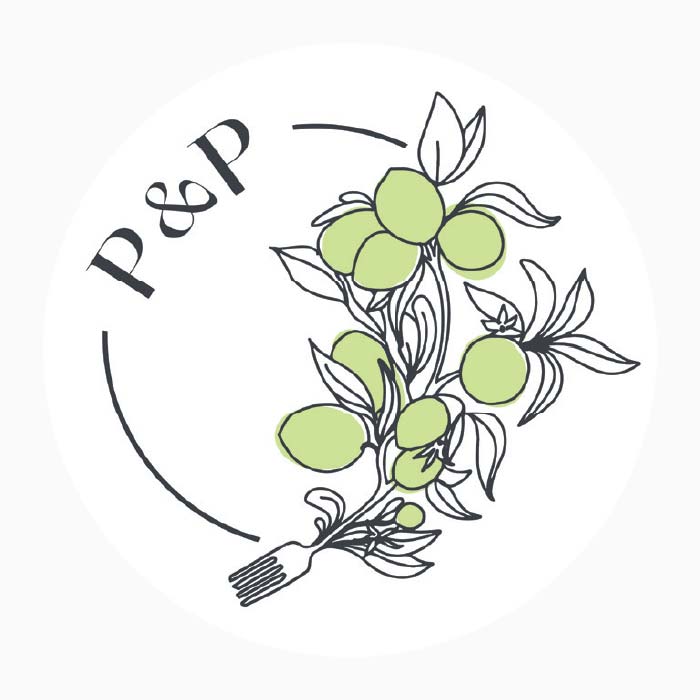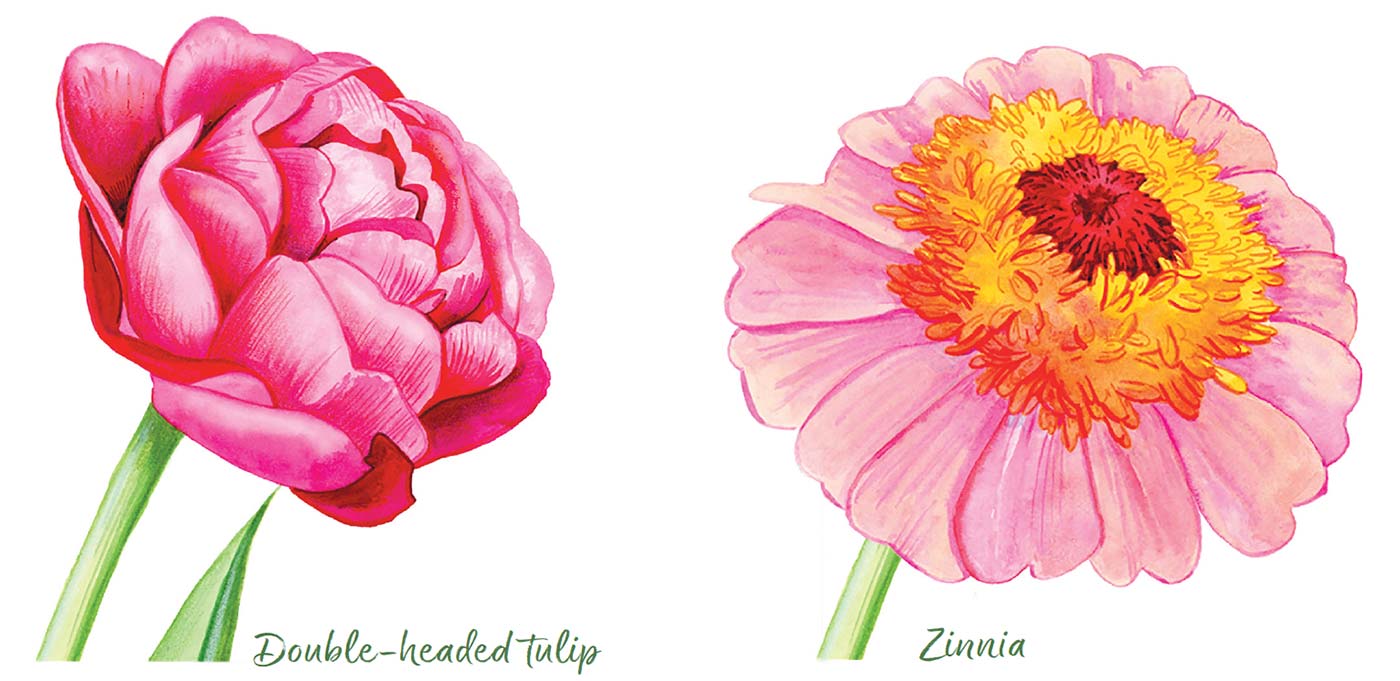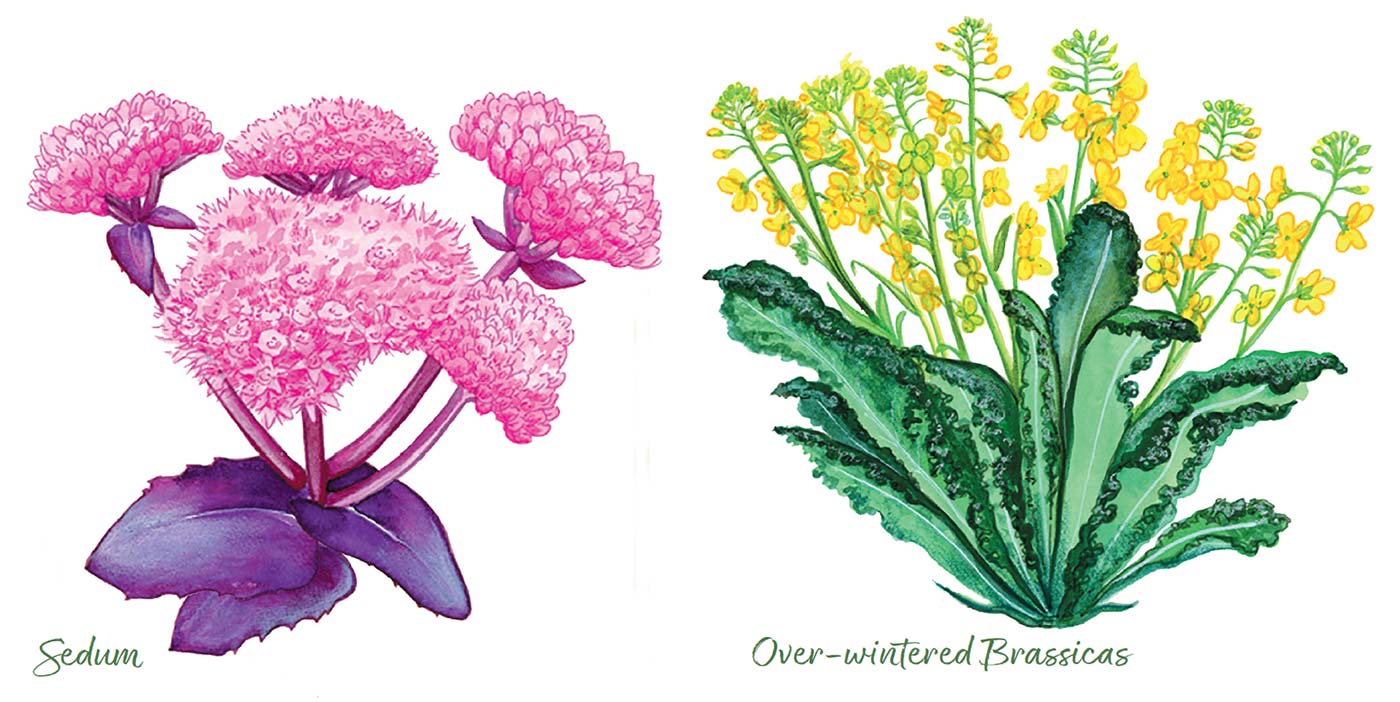Secret Garden

illustration: Claire Le Moing
Bouquets can be poetic inspiration tapping into all our senses season to season. Did you know many fruits, herbs and vegetable flowers can be used to enhance a bouquet with their fragrances, textures and unique shapes? Growing these bouquet ingredients in your own secret garden will provide ever-changing floral splendor while you learn to fill your garden with multiple-purpose plants. Get creative and invent your own remarkable bouquets.
THINK OUTSIDE THE ROSE GARDEN
The best flowers for bouquets have long and sturdy stems, but the most uniquely beautiful bouquets are created by using interesting edibles and finding ways to incorporate plants already growing in your yard.
Incorporate these herbs and vegetable flowers in your one-of-a-kind bouquets:
- Dill
- Elderberry flowers
- Chives, common or garlic
- Variegated pineapple mint
- Basil, such as Blue Spice
- Common or variegated sage
- Amaranth, such as Velvet Curtains
- Chicory (any variety flowers in year 2)
- Overwintered Brassicas, such as lacinato kale
- Okra, such as Okinawa Pink or Alabama Red
FORAGED FILLERS
- Woody shrub cuttings from landscape prunings of lilac, hydrangea, boxwood, holly, ninebark
- Invasive species you can feel good about cutting: autumn olive and Asian bush honeysuckle
- Prunings from flowering apple or stone fruit trees
- Pussy willow cuttings
- Elderberry blooms
HARVESTING TIPS:
- Use clean snips or scissors to harvest. Clean snips with alcohol to prevent the spread of disease.
- Harvest in the early morning or evening to prevent wilting.
- Harvest 12- to 15-inch stems.
- Bring a vessel filled with water to immediately submerge the stems.
ARRANGING TIPS:
- Remove any leaves that will be submerged in vase water.
- Use a product like Floralife Flower Food to extend the life of your cut flowers, or make your own extender with ¼ teaspoon of bleach per quart of vase water.
BOUQUET BLOOMS:
- Dill—Used in Ayurvedic medicines and loved by pollinators.
- Zinnia “Zinderella”—Best beginner flower. Long blooming and loved by butterflies.
- Cock’s Comb—Flowers, leaves and stems are edible and can be used to create natural dyes.
- Hyacinth Bean Pods—Both pods and flowers make a beautiful addition to a bouquet.
- Blue False Indigo—Excellent option for heavy wet clay soil. “Australis” is an Indiana perennial native.
- Dahlia—Edible tubers. Shorter versions work well in pots

Peaceful & Practical Edible Gardens was born from the combined love of gardening, food and design.
Founded by Lynsey Johnston, P&P reimagines how we source our food, while maintaining beautiful and bountiful landscapes. Lynsey is fascinated by the possibility that food can grow anywhere, that a few seeds can provide enough food for multiple families and that a deeper understanding of plants and nature has the power to change our lives.
P&P is active in the community, teaching folks how to responsibly create and care for their gardens, build spaces and grow healthy food. They have a keen focus on caring for the earth, centering ethical principles of permaculture and educating the community.
P&P works with home gardeners and community gardens in the Indianapolis area, and serves clients on a national scale through virtual support. Their services include edible garden design, installation and maintenance, and workshops and coaching.
Do you want to reconnect with nature and redesign your space, while growing your own healthy food?
Learn more at PeacefulandPracticalEdibleGardens.com
Follow on Instagram @peacefulpracticalediblegardens
And in case you are wondering: Yes, lime trees can grow in Central Indiana.
GARDEN TASKS FOR EACH SEASON:
Spring:
- Refresh soil with compost as needed.
- Sow annual flowers.
- Plant perennial flowers.
- Mulch beds.
- Harvest overwintered Brassica flowers.
Summer:
- Deadhead flowers
- Manage garden pests.
- Pull weeds.
- Observe your plants’ health.
- Take notes on what has done well in your garden.
- Purchase fall-planted tubers, bulbs and corms.
- Fertilize.
Fall:
- Plant tubers, bulbs and corms such as tulips, ranunculus, daffodils.
- Dig and lift dahlia tubers and other non-hardy bulbs and store for winter.
- Sow seeds of hardy annuals.
- Add compost or soil amendments as needed.
- Plant perennial flowers.
- Refresh mulch around perennials.
Winter:
- Purchase seeds and spring-planted bulbs.
PLACES TO PURCHASE
Local:
- Habig Garden Shop, Westfield & Indianapolis | www.Habiggardenshop.weebly.com
- Forest Flower, Indianapolis | www.Theforestflower.com
- Central Indiana Seed Swap, Noblesville
- Local Purdue Master Gardeners’ spring plant sales | www.Purdue.edu/hla/sites/master-gardener/events
- Native Plants Unlimited, Fishers | www.Nativeplantsunlimitedshop.com
- Perennials Plus, Westfield | www.Perennials-plus.com
Online:
- Johnny’s Selected Seeds | www.Johnnyseeds.com/flowers
- Floret Flowers | www.Shop.floretflowers.com
- Swan Island Dahlias | www.Dahlias.com
- Colorblends Wholesale Flower Bulbs | www.Colorblends.com
- Holland Bulb Farms | www.Hollandbulbfarms.com
THE YEAR IN BLOOM

SPRING BLOOMS
• Iceland poppies • Tulips • False Queen Anne’s Lace • Bells of Ireland • Ranunculus • Sweet Peas • Chocolate Lace Flower • Yarrow • Chives • False Blue Indigo
SUMMER BLOOMS
• Zinnia • Sage • Lavender • Dahlias • Okra • Blue Spice Basil • Cockscomb • Runner beans • Dill • Purple Hyacinth Bean • Daylily

FALL BLOOMS
• Sunflower • Black Eyed Susan • Ornamental grass plumes • Italiko Rosso Dandelion • Sedum (Stonecrop Purple Emperor or Thunderhead cultivars) • Dahlia
LATE WINTER/EARLY SPRING BLOOMS
• Daffodils • Overwintered Brassicas, such as kale




